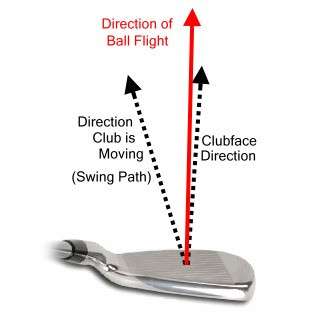
Golf swing mechanics greatly affect the quality of your golf shots. Let's discuss the three key variables that will affect your swing mechanics. The address position, which refers to the beginning of your body's posture, can affect the head as well, shoulders, scapula, neck, and shoulders. Poor postures can reduce the force that your body can apply during the back swing. Here are some techniques for improving your golf swing mechanics.
Problems with the golf swing mechanics
Most problems with golf swing mechanics occur between the third and full point of the standard swing. In the full swing, the golf club reaches a parallel position to the ground, starting the downswing. Many non-professional golfers struggle to complete the full swing. Their body mechanics, which include poor joint mobility and soft tissues restrictions, are not ideal. To improve their golf swing mechanics they need to understand their bodies.

Incorrect ball position can affect the direction and contact of your shots. Your ball should be aimed forward so that it hits the ground and not the target. This can affect your shoulder alignment and forearm alignment. Golfers who make these errors often have issues with their setups. It can be disastrous for their game. It is important to fix these issues before you can improve your game. To fix these issues, it is important to learn how you can maintain the correct ball position.
Variables for the golf swing mechanics
Inverse dynamics is a way to explain swings by taking into account four variables: the length and direction of the hand path, how much force was applied to the club and the angle at which the club is rotated. The force-distance curve, however, is focused on the linear energy applied to a club during swing. These four variables are equal in inverse dynamics. The more angular the force-distance relationship, the greater the improvement in performance of the driver and the overall game.
The predictive power of the angle of the clubhead and club shaft in the backswing is lower than the force applied along a hand path. This means that the negative couple has less benefit during the final 30ms of the downswing. To avoid this, golfers must keep a positive couple throughout their swing. This requires adjustments to wrist joint torques, and trail elbow extension torque. These torques can reach 1000deg/s in mid-handicappers.
Golf swing mechanics improvement techniques
Correct technique will improve your shots. During the downswing, the shoulders and hips should drive in the same direction as the ball, creating peak speed and optimum distance. A proper golf swing is smooth and effortless, with no sudden movements of the arms or head. Many golfers focus their energy on the upper body, which can lead to a slicing or topping motion. Therefore, they need to learn how to turn and maintain their hips.

Stretching is a key technique for improving golf swing mechanics. You can end up with a poor posture and a reversed pivot if you don't stretch your hamstrings correctly. To avoid problems, stretch your hamstrings prior to the swing. Always remember that your hamstrings play an integral role in the golf swing. Improper stretching can cause back injury.
The impact of the swing mechanics of golf on shot quality
While the impact of golf swing mechanics may be underrated, many factors can have a direct effect on the quality of a shot. A shot that is not balanced or has a bad finish will be of lower quality. The direction of the ball's path will also be determined by the position of your hands and arms. The right stance is crucial for a good shot, and so is the use of a golf club that is too wide.
Speed is an important component of a good golf swing. This will affect your ability to hit the ball hard and far. The golf swing has many complex mechanics and is a complicated exercise. However, a little knowledge about this can help you pinpoint any swing faults. By watching how you hit your ball, you can improve your swing mechanics. These are some tips that will help you perfect your golf swing mechanics.
FAQ
What is a good golf swing?
Balance is key to a smooth golf swing. Balance means being steady and balanced throughout the entire movement of the body. When swinging the golf club, ensure your arms are relaxed but strong. You should ensure that your shoulders meet the target line.
Follow through by keeping your head still as you backswing. Swing effortlessly and keep your wrists straight. Don't force the ball. Instead, be fluid and smooth.
How often should I play golf?
It depends on your availability of time. However, most recommend practicing at least twice per week.
If you are serious about becoming an expert golfer, you should aim to play four times per week.
What's the difference in a driving range and an 18-hole putting green?
A driving range lets players practice hitting balls from 50-300 yards. To practice putting, players use putting greens.
How much does it cost to play a round of golf?
Prices for each person can be anywhere from $15 to $30 This includes greens fees as well as cart rental and refreshments.
What are the essential items to take on a trip to the golf course?
Take some snacks and drinks with you. You should also bring along your favorite tee shirt and sunglasses.
How is golf played?
Golf is played over 18 holes using the Rules of Golf.
The first stroke is taken behind a designated teeing area. Players play turns hitting balls into holes at different distances on the course. Each hole is different depending on the distance to the teeing areas.
There are three main types of shots used in the game of golf:
-
Players use clubs to hit the ball as far and high as they can in a drive shot. This type of shot is generally considered the most important shot in the game.
-
Players must aim for the ball in a specific area of the hole when they attempt an approach shot.
-
A putt is a game where players attempt to drop the ball into a cup by rolling it along on the ground.
The player must finish each hole by making all of his/her putts. Each unmade putt is a stroke loss.
It is possible for players to choose to play alongside a caddy or partner. This person will be responsible for carrying their club throughout a round. Although they are not allowed to influence the outcome of a match, the caddie can help the player with strategy and etiquette advice.
What is the best way to practice your golf swing?
Practice makes perfect! Every sport requires practice. If you want to get better at golf, you must practice. You will become familiar with the fundamental mechanics of the swing if you practice.
You should practice using both hands. Start with short shots. Then you can move on to longer drives. Then, you can practice chipping as well as putting.
Statistics
- They do this by means of assessing and rating courses according to the average good score of a "bogey golfer," a player with a handicap of around 20. (en.wikipedia.org)
- In the United States, the number of people who play golf twenty-five times or more per year decreased from 6.9 million in 2000 to 4.6 million in 2005, according to the [51] (en.wikipedia.org)
- They do this by means of assessing and rating courses according to the average good score of a "bogey golfer," a player with a handicap of around 20. (en.wikipedia.org)
- Professional golfers typically make between 60% and 70% of greens in regulation. (en.wikipedia.org)
External Links
How To
How to play a perfect golf swing
A great golfer knows how to play the game and what to do to improve it. He must know how to use different grips, stances as well as swings and techniques.
These tips will teach you how to play great golf.
-
Get to know the basics before you practice your swing.
-
Practice makes perfect. - You can practice by going out in nature or indoors and hitting balls at a target. This gives you the opportunity to improve your form and technique while not causing yourself any harm. You can play a few golf rounds once you feel confident in your ability to control the mechanics of your swing.
-
Be ready to hit any ball - Make sure you are ready by checking your grip, posture and alignment before you hit it. You can adjust if it doesn't feel right.
-
Keep it simple. Don't try and copy another player's swing. Instead, take inspiration from great players such as Tiger Woods, Phil Mickelson or Jack Nicklaus. They have perfected the art of their craft through years of practice.
-
Technology is key to improving your golf game. Many apps are available that will help you analyze your swing and track your score. They can also measure distances and give you advice based upon your statistics.
-
Be consistent. While practicing, you should always remember these principles: * Work on only one aspect of the game at a given time. For example, if you're working on your short game, work only on the short game drills. Do not mix your long drills with the short ones.
-
Focus on one part of your body at a time. If you focus on your left arm and work hard, your right arm will be forgotten. It won't improve your overall game.
-
Always be truthful. Never lie to your self. To put it another way, cheating yourself is when you think you are doing better than what you really are.
-
Play with your friends - This will help you improve your game. In addition to helping you stay motivated and giving you friendly competition, it also helps you keep your mind open.
-
Know your strengths and weak points - Discover where you excel and where there is room for improvement.
-
Have fun. Enjoy learning golf. There is no "perfect" way to play golf. You'll enjoy the journey even if you don't achieve perfection.